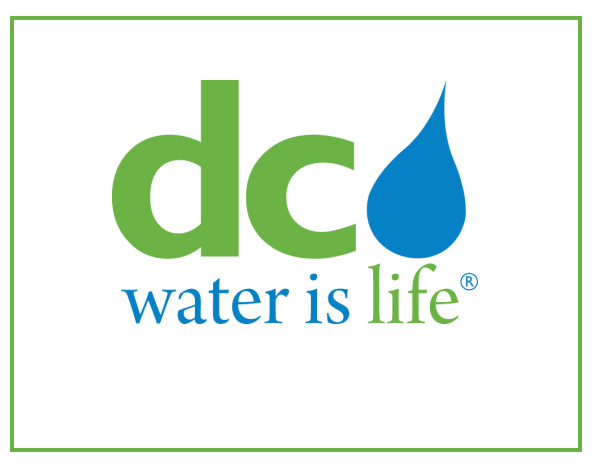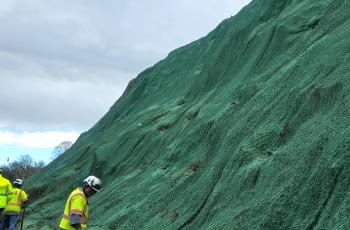Green Infrastructure
DC Water’s Green Infrastructure
Green infrastructure (GI) is part of the Clean Rivers Project’s hybrid approach that blends the best of gray and green controls.
Green infrastructure (GI) is an approach to managing stormwater runoff that takes advantage of natural processes such as infiltration and evapotranspiration, to slow down, clean and in some cases reuse stormwater to keep it from overwhelming sewer systems and polluting waterways. The goal of GI is to mimic the natural environment through the use of plants, trees and other measures.
Click the image below to find DC Water's GI facilities.
Types of GI include:
•Roof Top Collection Practices: rain barrels, downspout disconnection, green roofs
•Permeable Pavements: porous asphalt, pervious concrete, permeable pavers
•Bioretention: tree boxes, rain gardens, vegetated filter strips, bioswales
Green Infrastructure Projects
Green infrastructure is being used to manage 92 impervious acres.
Learn about the many GI projects that are managing stormwater and contributing to water quality benefits by clicking on Completed Projects. The third GI project to be constructed in the Rock Creek Sewershed, Rock Creek Project C, is in the Design Phase with more information coming in 2024.
Benefits of Green Infrastructure
In addition to the control of stormwater, GI technologies like permeable pavement and bioretention provide other benefits to the community.
Site Level Stormwater Management. GI provides water quality benefits as soon as installation begins. The GI and other improvements have allowed the District to enjoy water quality and environmental and social benefits beginning in 2017.
Triple Bottom Line Benefits. GI offers environmental, social, and economic benefits that would not be realized under the previous plan. GI can increase property values, beautify neighborhoods, cool extreme summer temperatures, support natural habitats, enhance public space and support local green jobs.
Jobs. DC Water has established an ambitious local jobs program that includes training and certification opportunities for District residents interested in GI construction, inspection and maintenance jobs. The National Green Infrastructure Certification Program (NGICP.org) has trained and certified the first group of individuals. DC Water has established a goal to have 51% of new jobs created by the GI project to be filled by District residents. DC Water has also engaged professional service firms and contractors based in the District to perform work associated with GI.
Keep Up to Date With the Project

Call our
Outreach
Coordinators
-

202-787-4400
Comparing the Natural vs Urban Environment
Stormwater is the water generated by rain or melted snow on "impervious surfaces" or surfaces that do not allow the water to soak into the ground (such as roads, driveways, sidewalks, parking lots, and buildings). Stormwater runoff occurs when rain or snowmelt flows over these impervious surfaces. Stormwater can pick up trash, excess nutrients (such as nitrogen and phosphorus), sediment and other pollutants that flow into a storm sewer system or directly to a lake, stream, river, or wetland. Untreated stormwater runoff ends up in the waterbodies we use for swimming, fishing and providing drinking water. Polluted stormwater runoff can have many adverse effects on plants, fish, animals and people. For example, trash can clog waterbodies, nutrients can cause algae blooms, and sediment impacts aquatic life. In a combined sewer system, stormwater can cause combined sewer overflows.









Do you have a question or comment?